MoMA Acquires First Kinematics Dress

We have created the first dress with Kinematics, our 4D printing system for generating complex, foldable forms. The Museum of Modern Art has acquired the dress along with the software that created it for their permanent collection. Composed of thousands of unique interlocking components, the dress was 3D printed as a single folded piece at the Shapeways factory in New York City and required no assembly. The Kinematics Dress represents a new approach to manufacturing which tightly integrates design, simulation, and digital fabrication to create complex, customized products.
Bodies are 3-dimensional but clothing is traditionally made from flat material that is cut and painstakingly pieced together. In contrast, Kinematics garments are created in 3D, directly from body scans and require absolutely no assembly. We employ a smart folding strategy to compress Kinematics garments into a smaller form for efficient fabrication. By folding the garments prior to printing them, we can make complex structures larger than a 3D printer that unfold into their intended shape automatically.
The custom-fit dress is an intricately patterned structure of 2,279 unique triangular panels interconnected by 3,316 hinges, all 3D printed as a single piece in nylon. While each component is rigid, in aggregate, they behave as a continuous fabric allowing the dress to flexibly conform and fluidly flow in response to body movement. Unlike traditional fabric, this textile is not uniform; it varies in rigidity, drape, flex, porosity and pattern through space. The entire piece is customizable, from fit and style to flexibility and pattern, with Kinematics Cloth our first app for clothing.
Below, we discuss the dress in more detail and the tools we created to generate it: Kinematics Cloth and Kinematics Fold.
video: the making of the Kinematics dress
This video was filmed at Shapeways 3D printing factory in New York City on the day the dress emerged from the printer.
Kinematics Dress by Nervous System – 3D Printed by Shapeways from Nervous System on Vimeo.
a wearable dress
The Kinematics Dress is a technical achievement but its also an article of clothing. We designed it with comfort and durability in mind, aiming to make a 3D-printed garment that you can actually wear, one that invites movement instead of constraining it.
Watch the video below to see how the dress moves.
Kinematics Cloth | world’s first 3D printed clothing app?!?
The dress design was created in Kinematics Cloth, a web application where people can design custom-fit 3D garments by sketching and sculpting in real time. A variety of clothing items can be created in the app including dresses, skirts and shirts. Users can sculpt the silhouette and hemline of their garment and determine the pattern of the garment’s tessellated fabric structure. Kinematics Cloth further expands the design system we introduced with last year’s Kinematics and Kinematics @ home apps.
real time
The design system uses an adaptive remeshing technique to allow a user to design a pattern of modules in real time with an intuitive painting interfacing. While these complex structures would be difficult and time consuming to create in traditional CAD modelling, the Kinematics app makes it accessible to anyone.
on the body
Kinematics Cloth builds garments to your exact measurements. Using parametric body modelling technology from BodyLabs, you can import your body into the app. Clothing designs created on in Kinematics Cloth can be adapted to any body shape.
design your own kinematics garments: http://n-e-r-v-o-u-s.com/kinematicsCloth
technology used: javascript, BodyLabs shape explorer
Kinematics Fold | simulation tool for compressing kinematics designs
Clothing designs generated in Kinematics Cloth are too large to fit in a 3D printer. In order to make them printable, we compress them with Kinematics Fold, our simulation tool for Kinematics designs. The Kinematics Dress was compressed by 85% by folding it in half twice.
Kinematics Fold uses rigid body physics to accurately model the behavior of the structures generated by Kinematics Cloth. The simulation uses the Open Dynamics Engine (ODE) solver to reproduce the behavior of the physical object with each module represented as a simplified triangular shape connected to each other by idealized hinges. Rather than trying to find an optimal fold for a given structure, which would be computationally intractable, the software mimics how one might physically fold a garment in real life. Each garment goes through a series of collisions designed heuristically to reduce the overall size in an intuitive manner.
Even this approximate approach is quite computationally intensive and encounters many difficulties. Geometry has direct impact on how well an object can fold. Areas with negative Gaussian curvature have a lot of movement but areas with high Gaussian curvature are naturally more rigid, preventing compression. Also, the network of hinges between rigid bodies is densely interconnected which causes numerical problems. Not only does the computation required greatly increase with the number of hinges, but the error of the entire system also increases.
Our latest version of Kinematics Fold can compress designs with thousands of interlocking pieces into 3D-print-ready configurations.
technology used: C++, ODE, OpenFrameworks
fabrication
The dress was produced with the generous support of Shapeways at their factory in New York City. It was 3D-printed in nylon by Selective Laser Sintering over a span of approximately 48 hours. We traveled to NYC to watch the dress emerge from the 3D printer. We observed as two masked technicians slowly excavated the folded dress from a huge block of nylon powder. Afterwards, they blasted it with air to remove the loose powder from its joints and surface. The experience was stressful and full of suspense. While we watched and waited, we were wondering if our idea would actually work. Would the dress be able to unfold?
We felt both relief and satisfaction when the print unfolded into a wearable gown! Our friend Lana joined us at the factory to try the dress on and give it a test run down what could be the world’s most expensive runway, a corridor lined with industrial 3D printers.
acquisition
The Museum of Modern Art has acquired the Kinematics Dress and also the Kinematics App and the Kinematics concept video for its permanent collection.
acknowledgements
We would like to specially thank some of the people who made this possible.
Eric Rachlin and Paul Melnikow at BodyLabs for their incredible parametric body modeller
Paola Antonelli and Paul Galloway at MoMA for acquiring our dress!
Duann Scott and Shapeways for fabricating the dress!
Lana and John Briscella for moral support and last-minute dress wearing
Andrew Robertson for filming the dress emergence at Shapeways
Steve Marsel for photographing the dress in action
Larosey for taking the dress for a spin
more information
You can read more about the dress and the tools we made to create it on the Kinematics Dress project page.

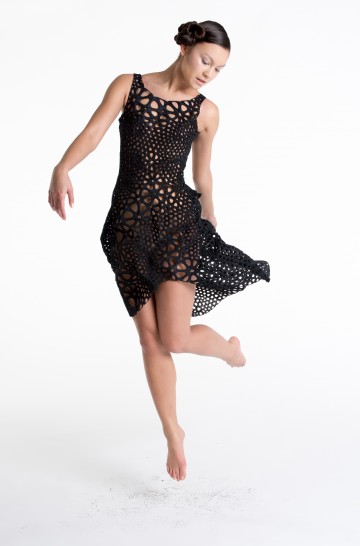
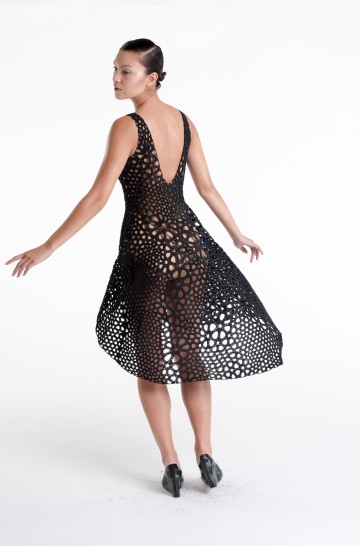
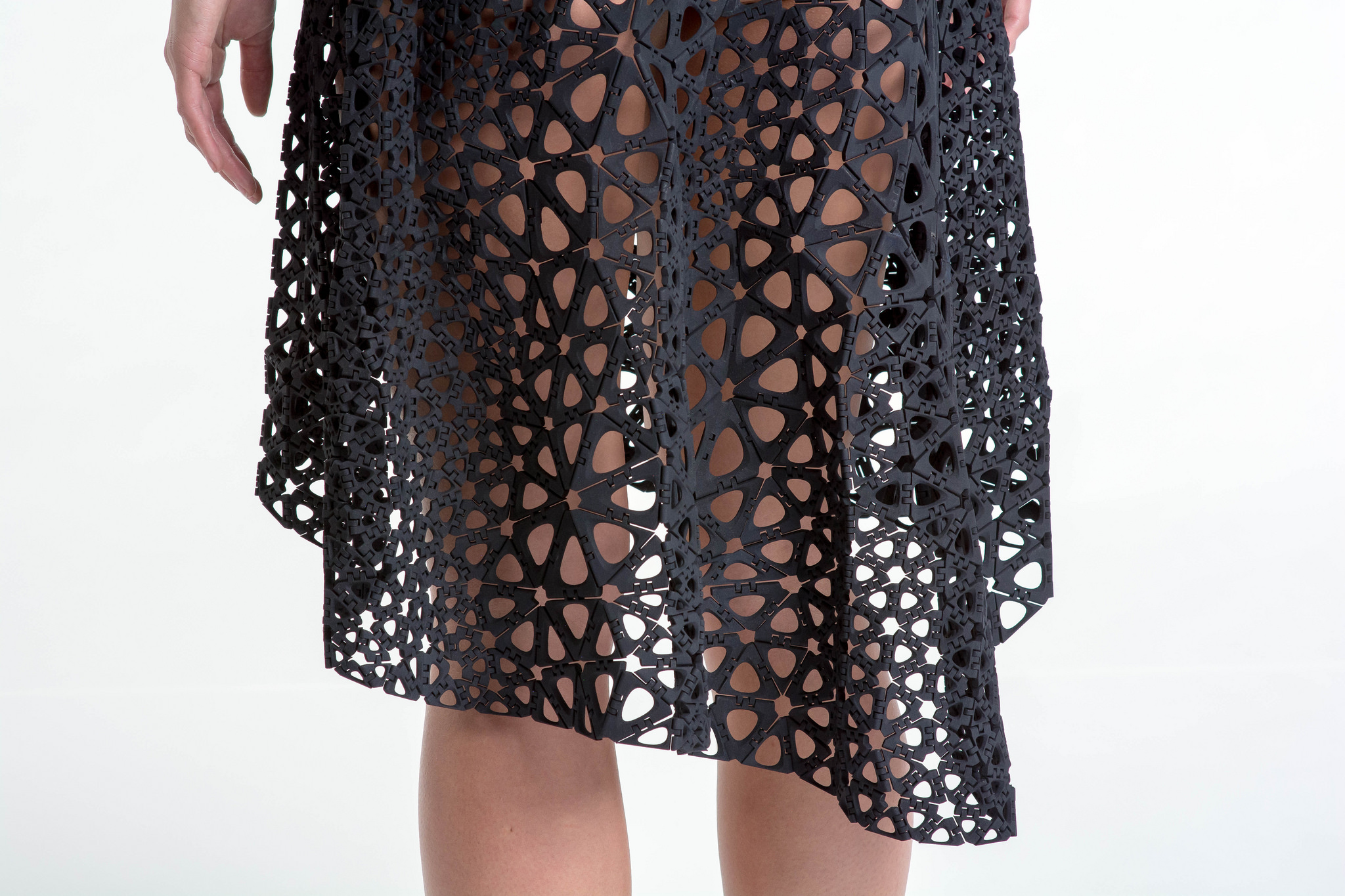
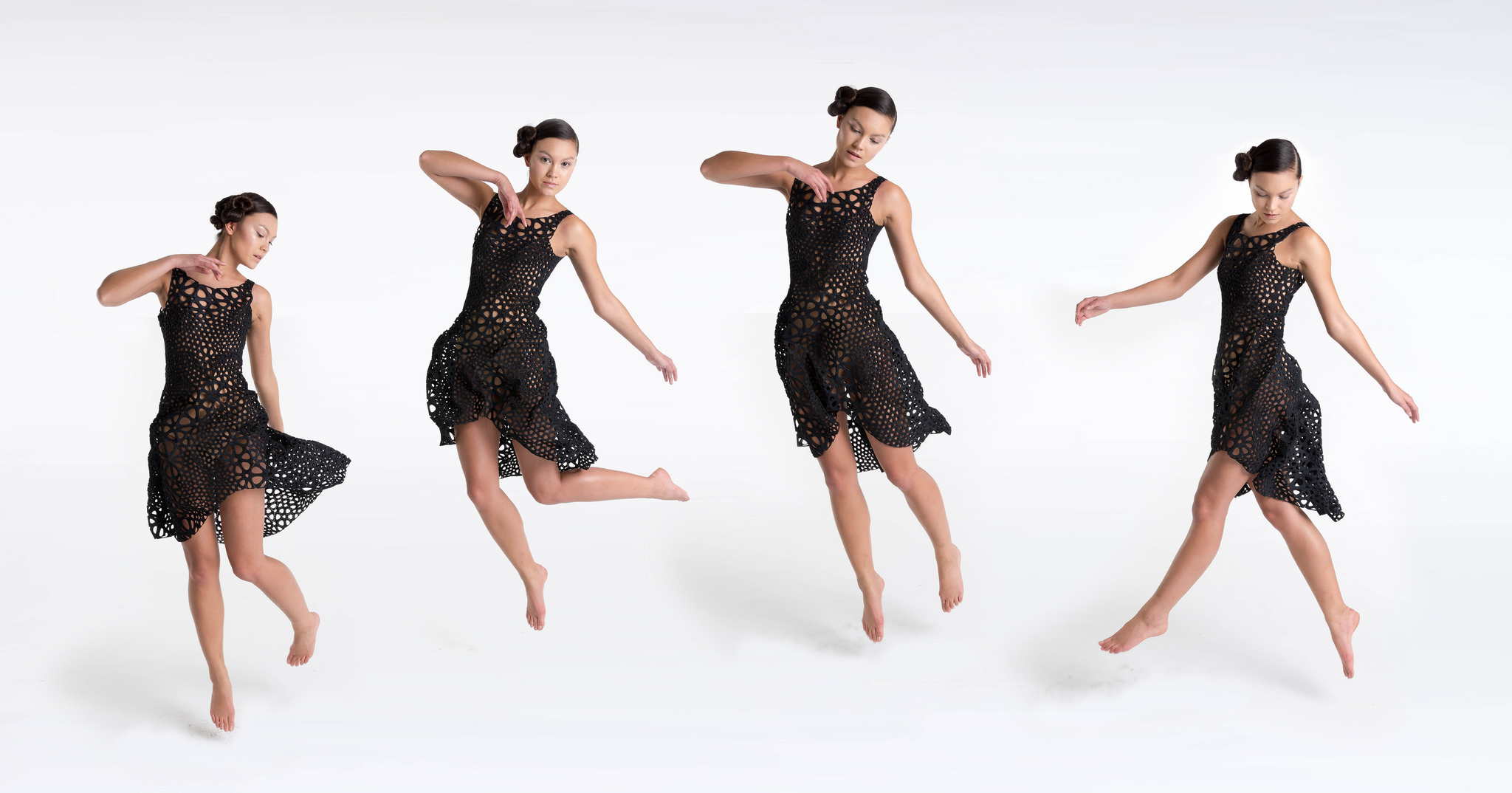
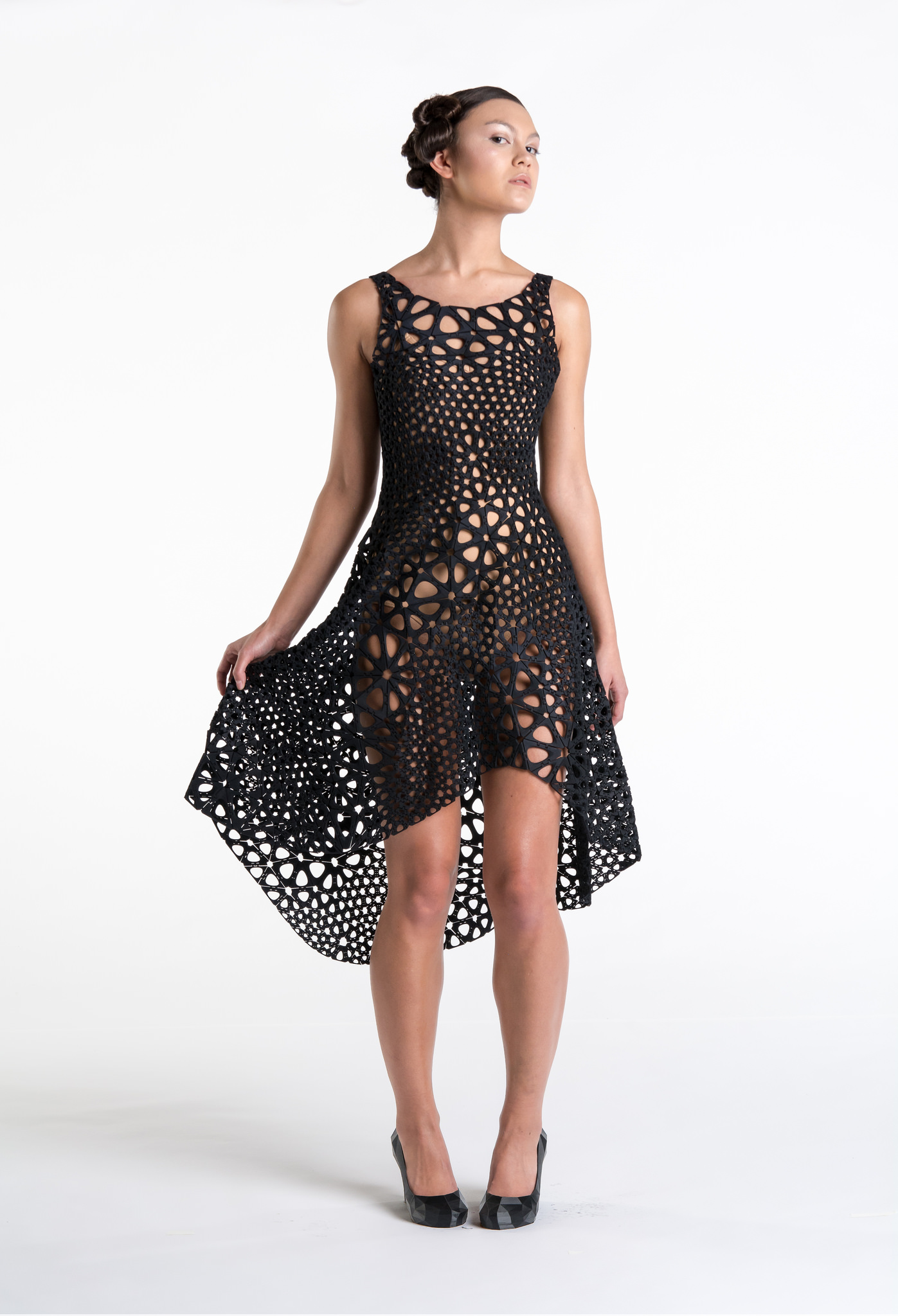
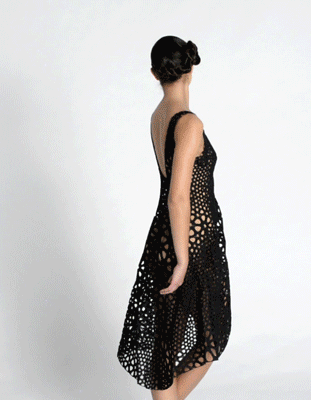
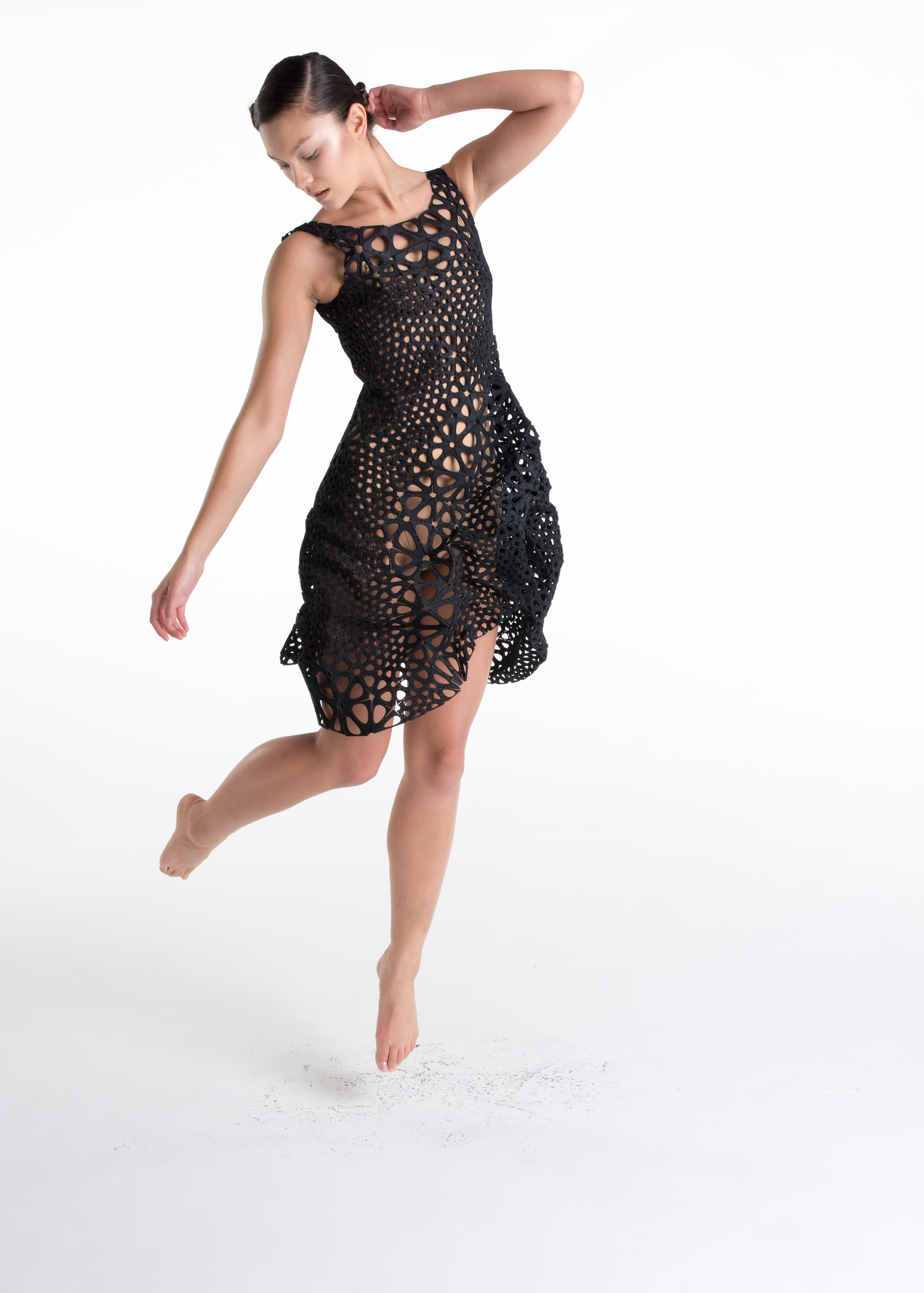
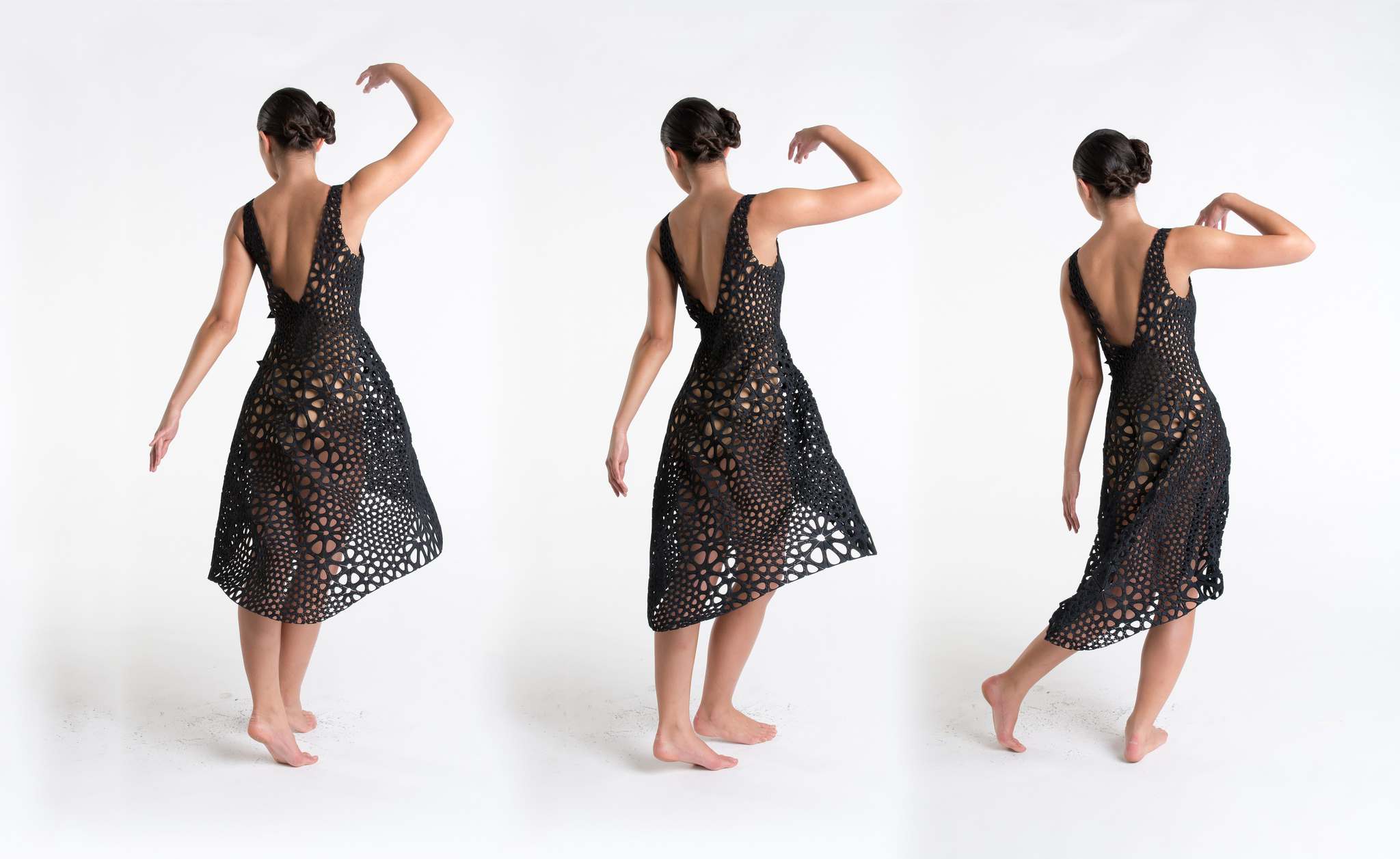
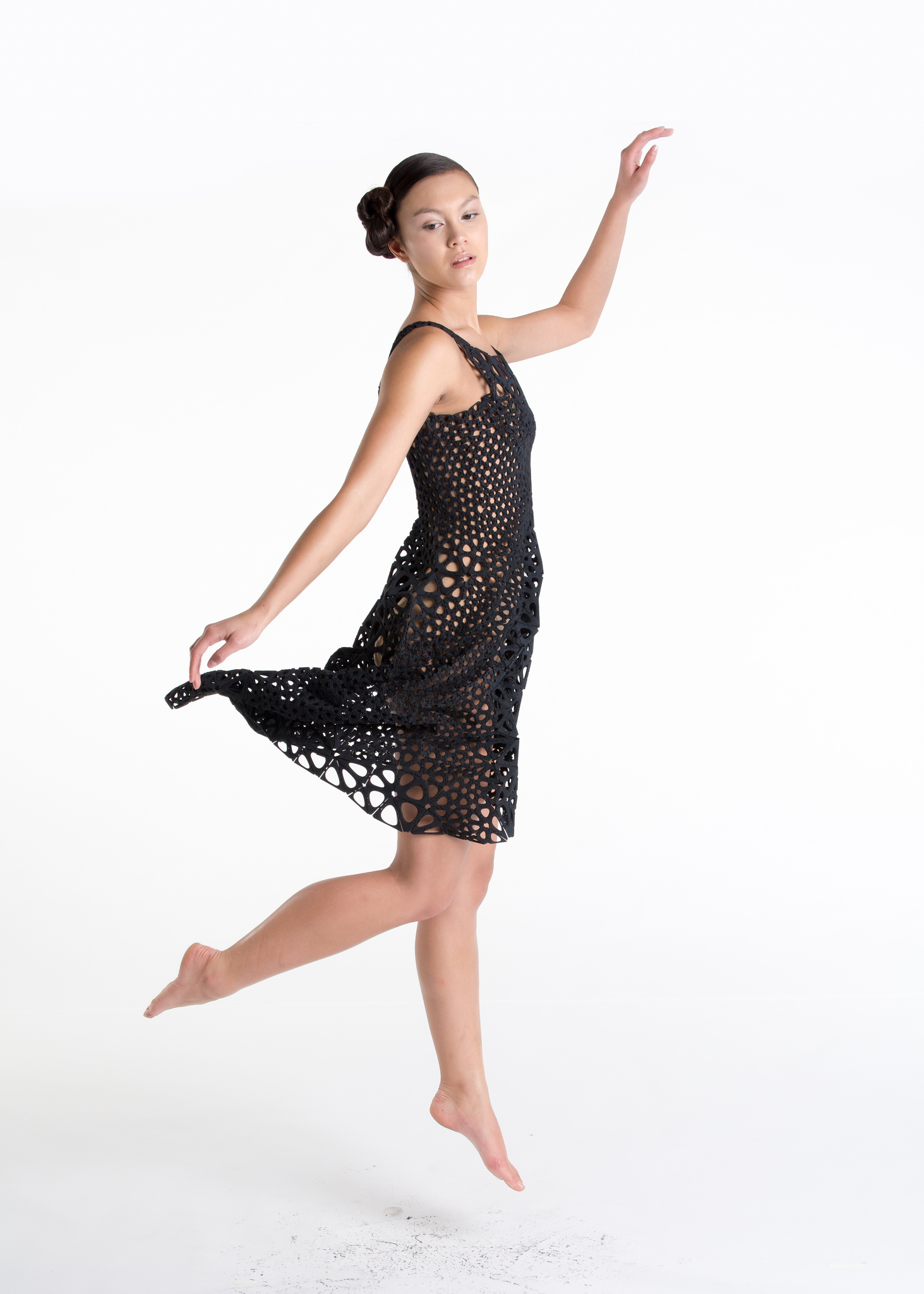
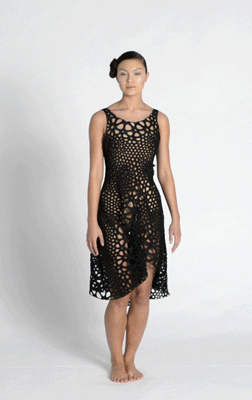
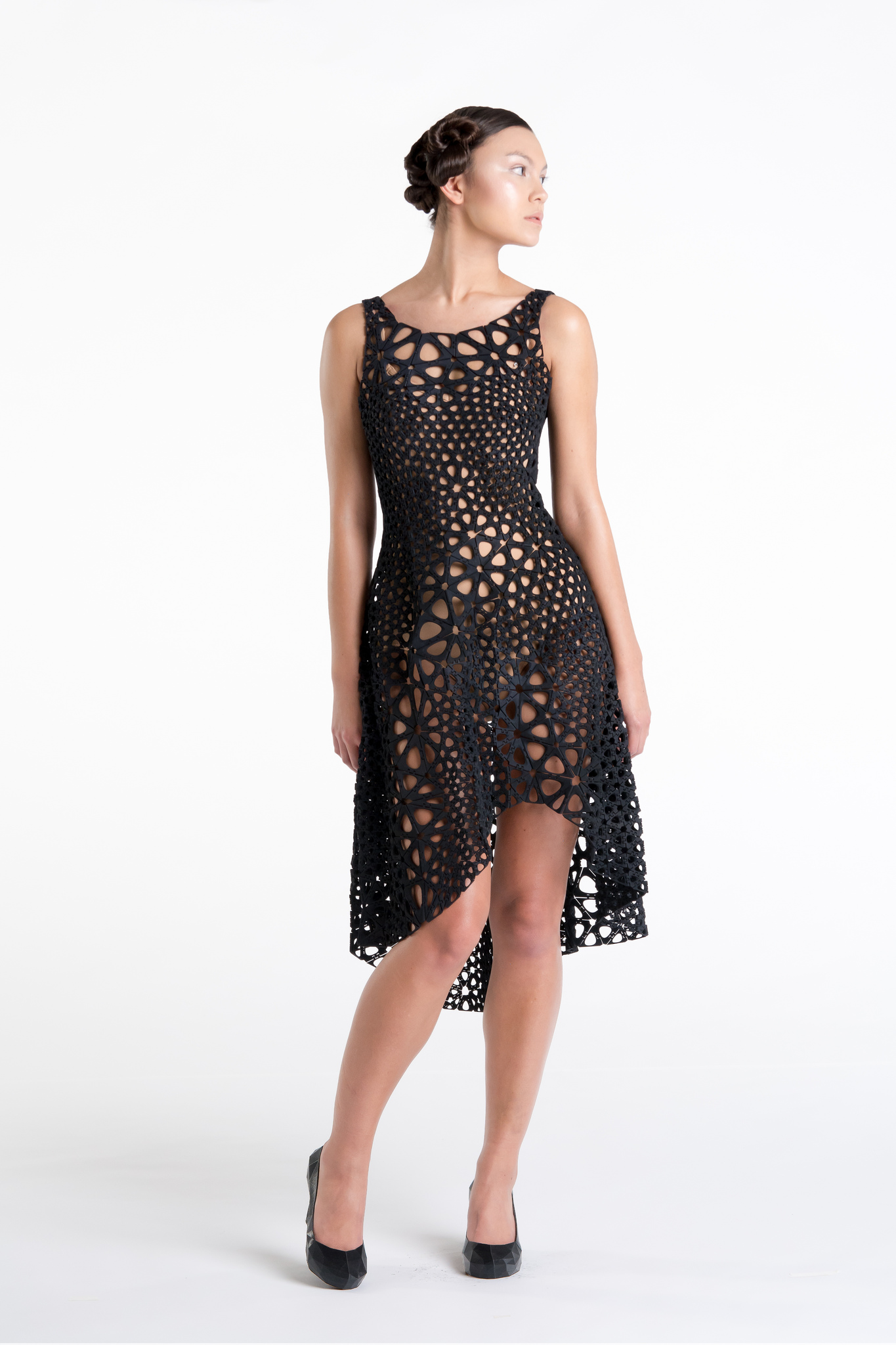
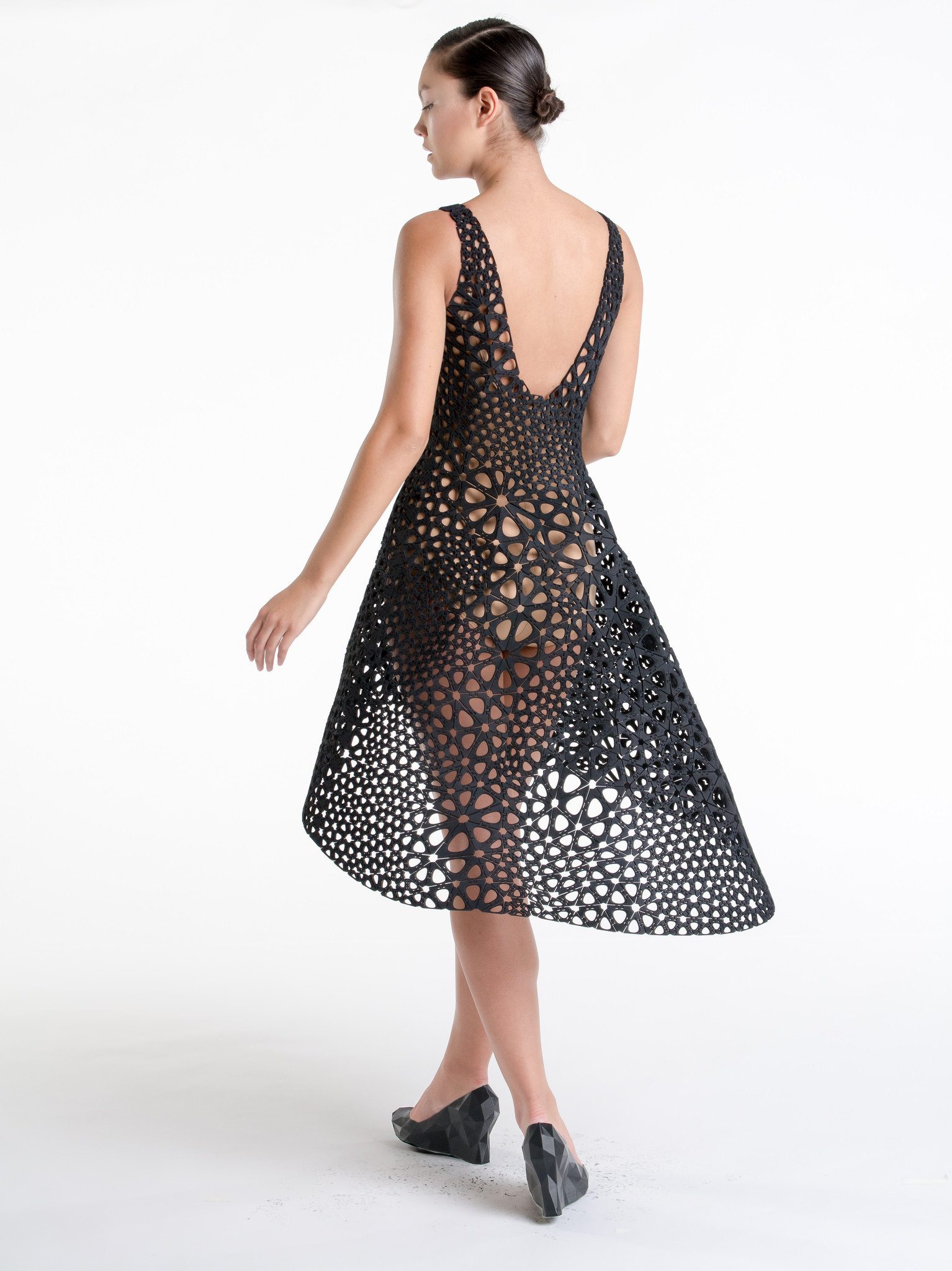
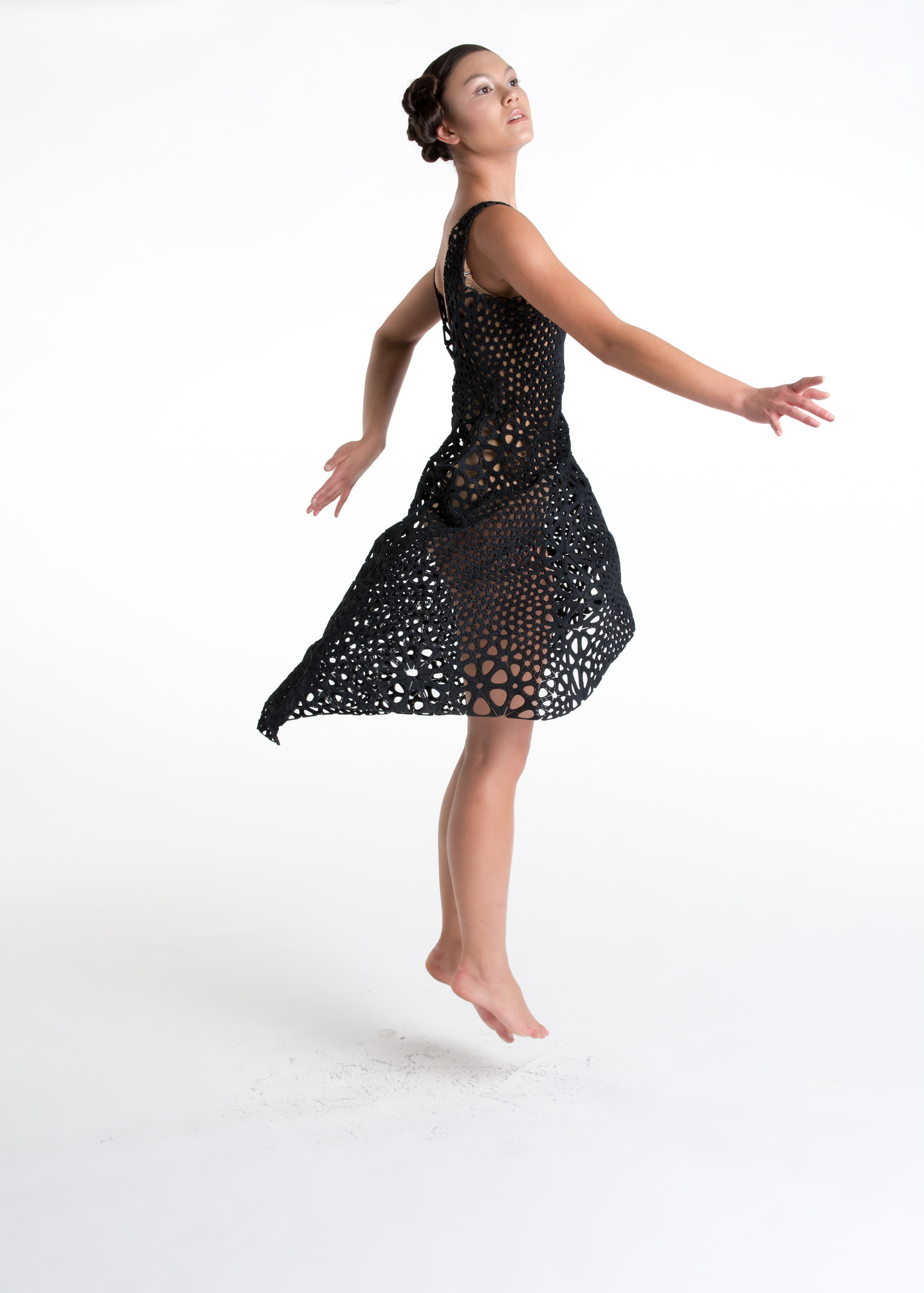
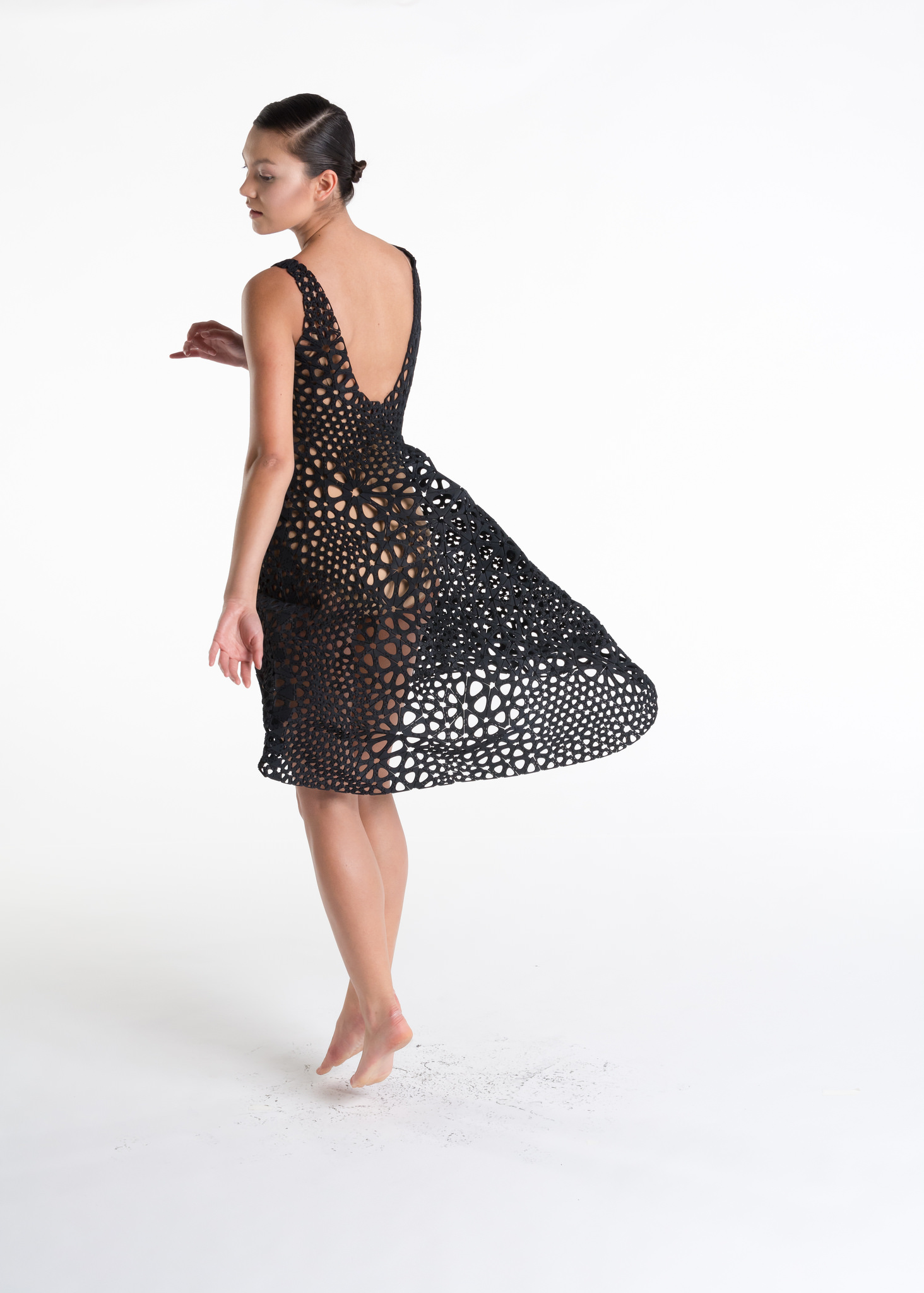
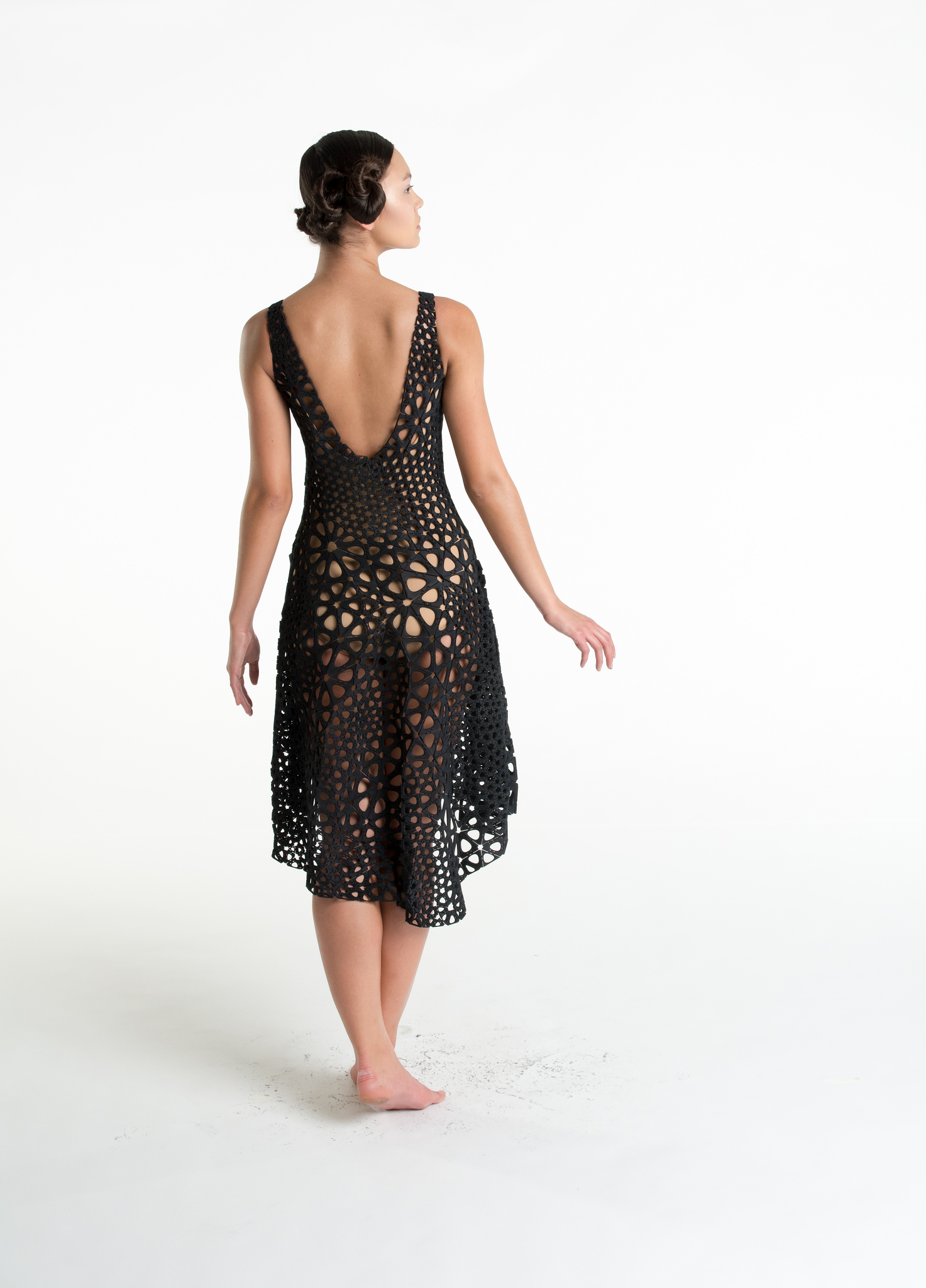
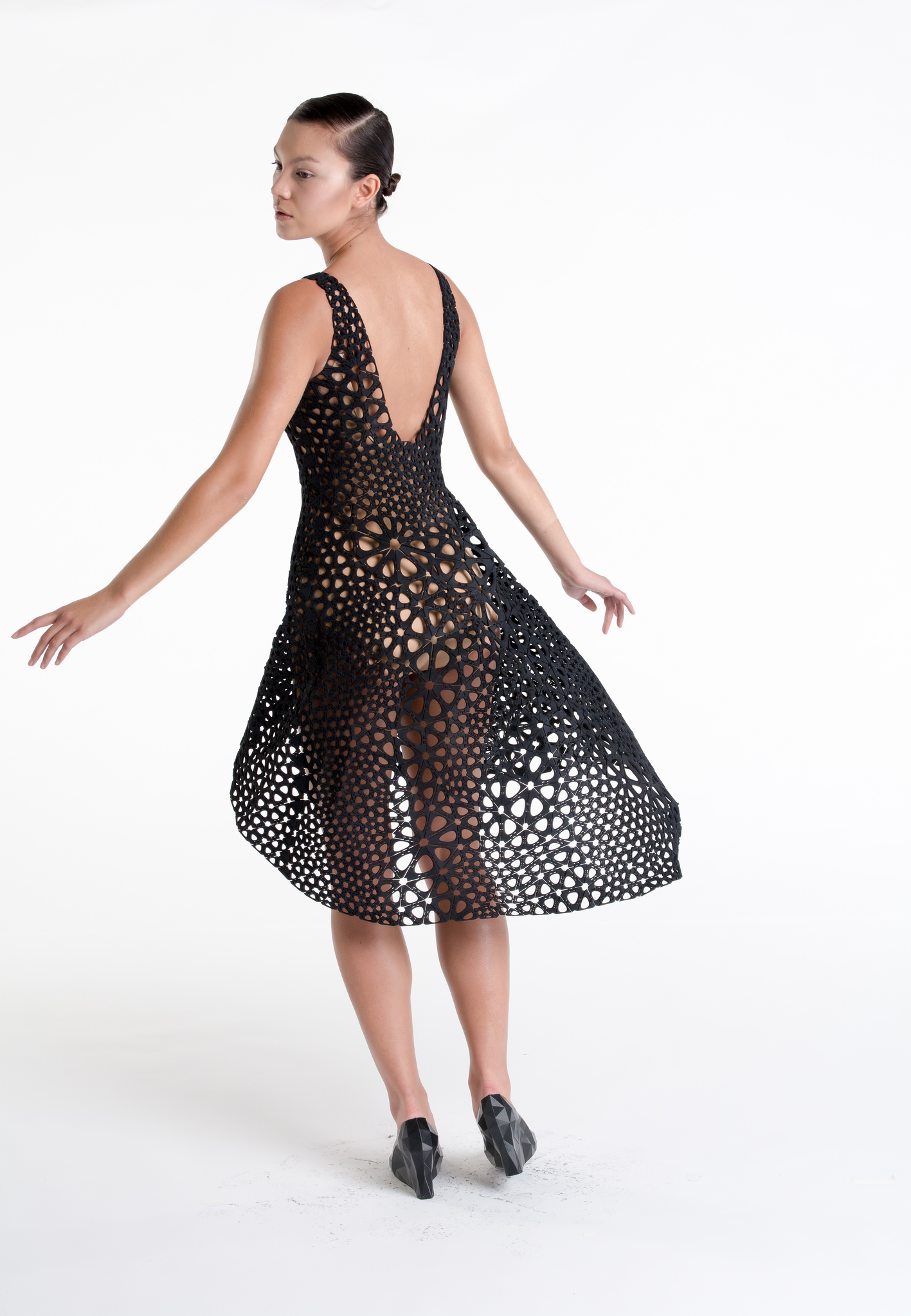
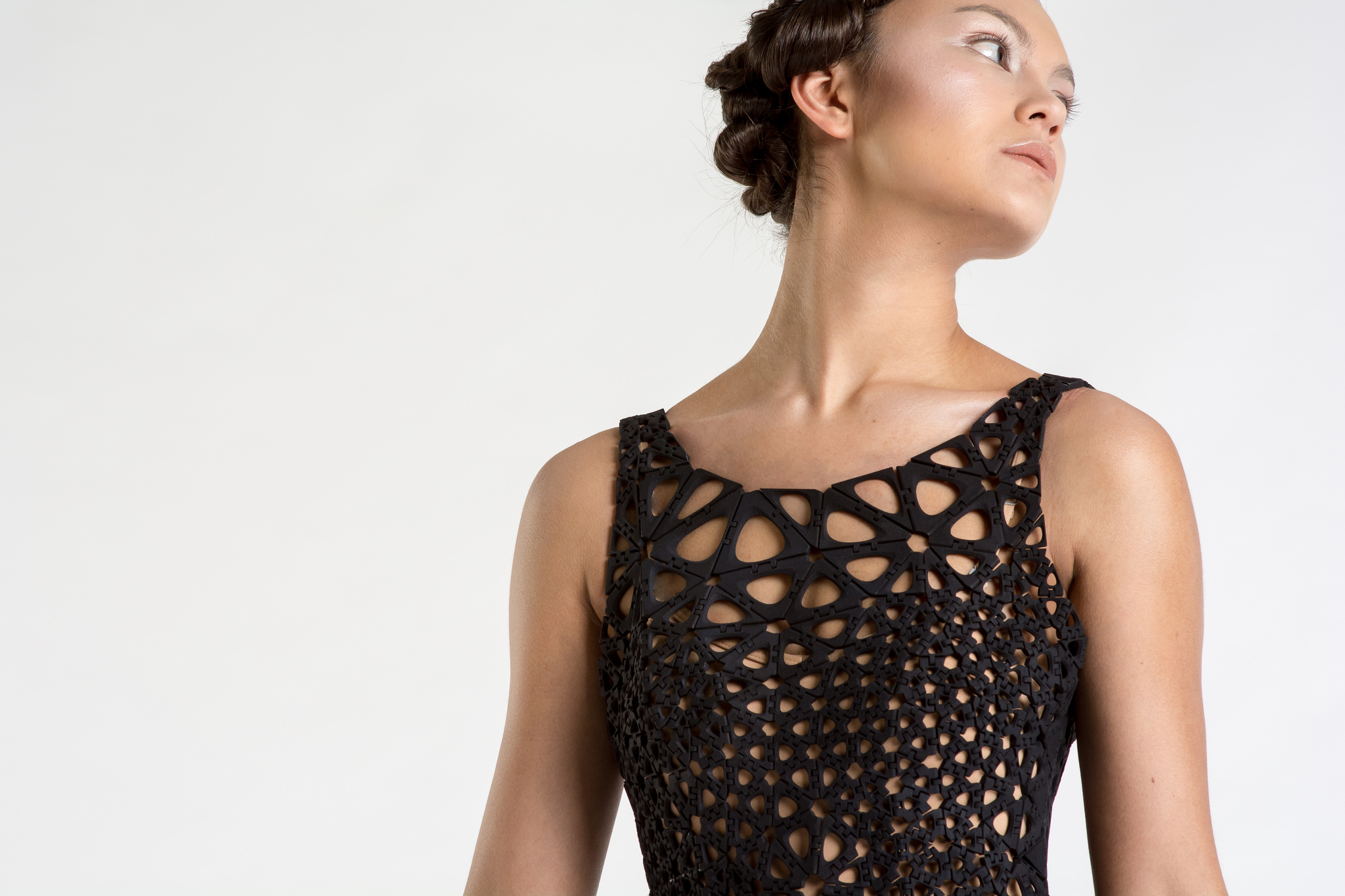
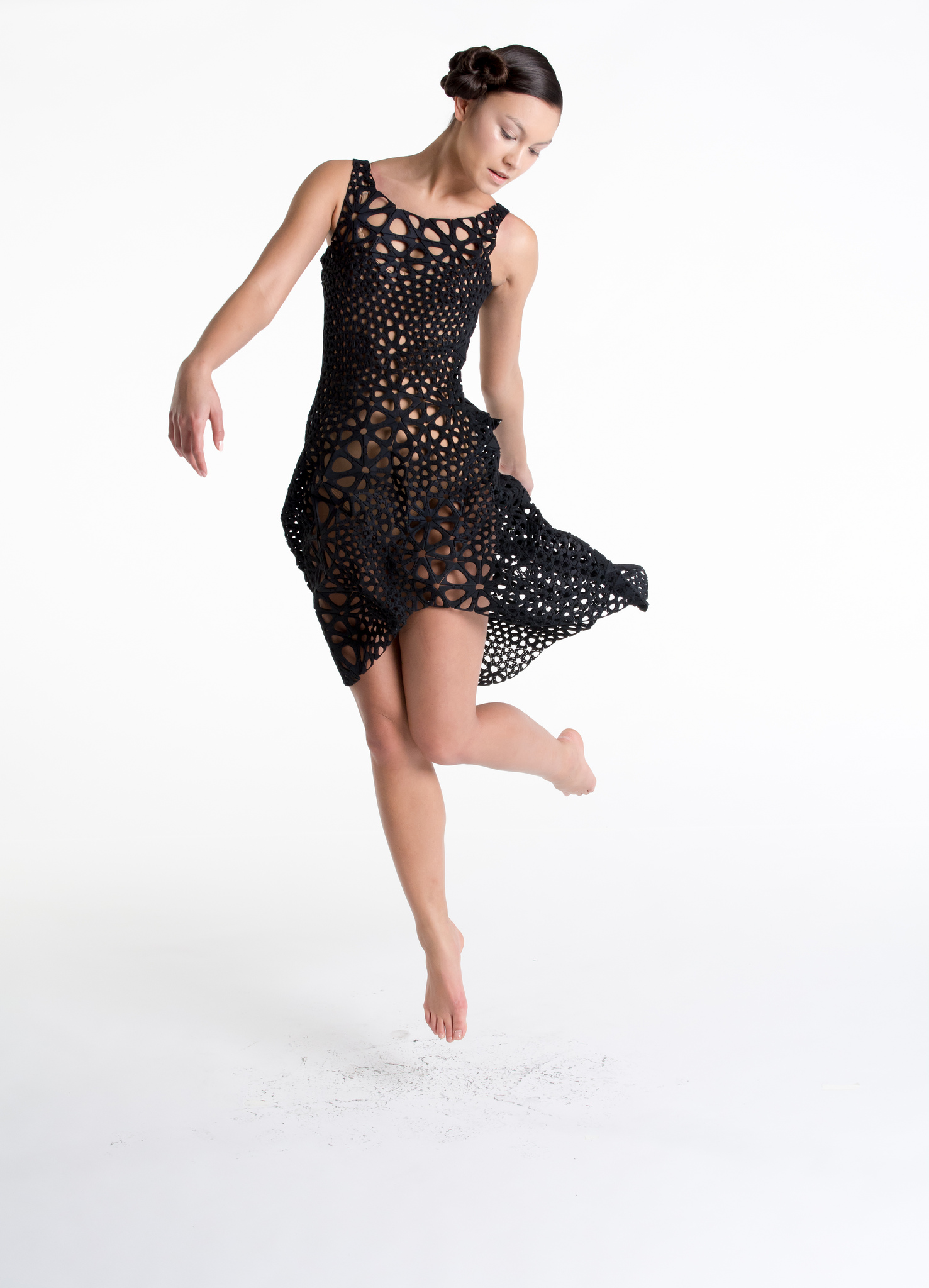
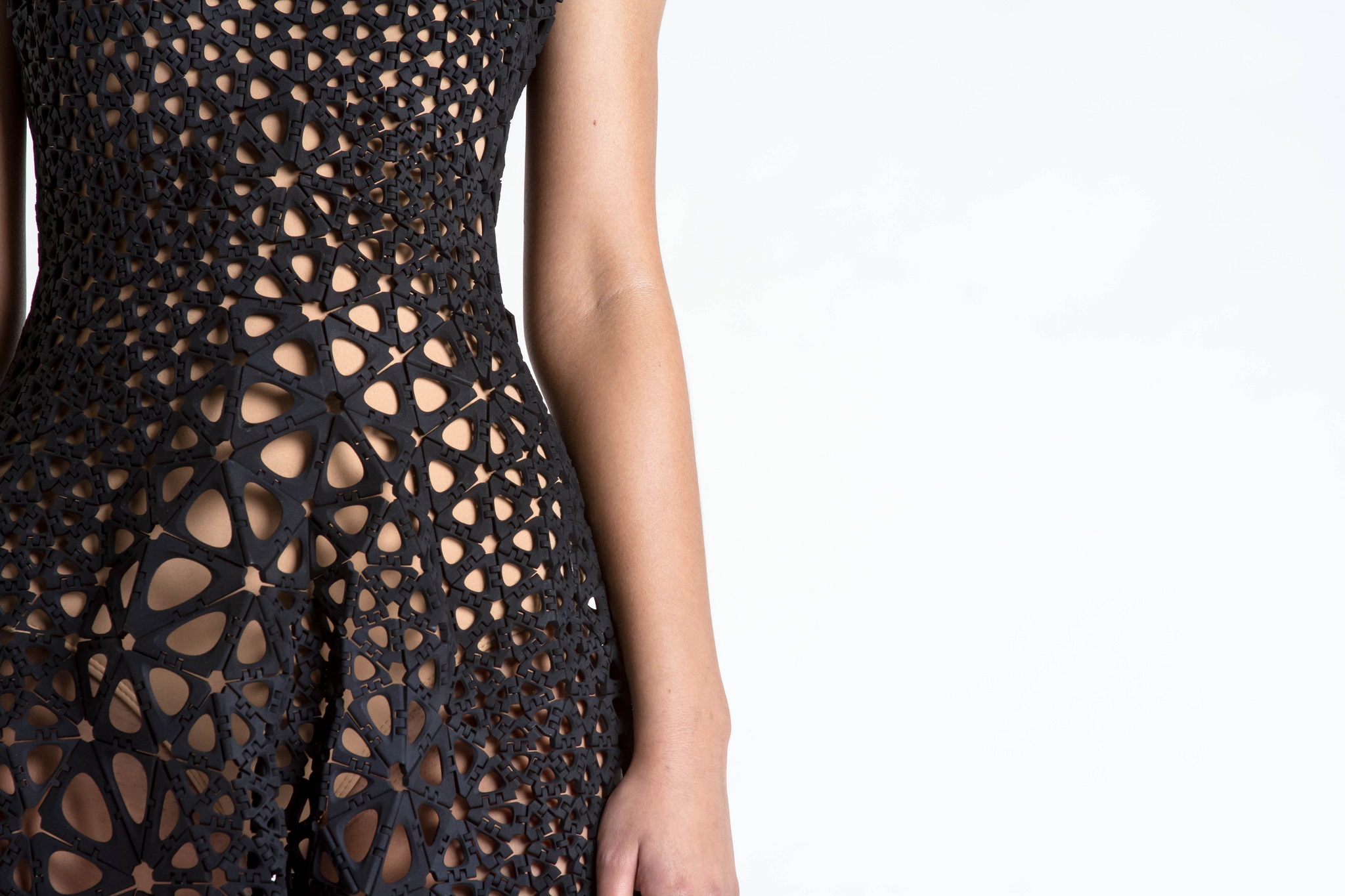
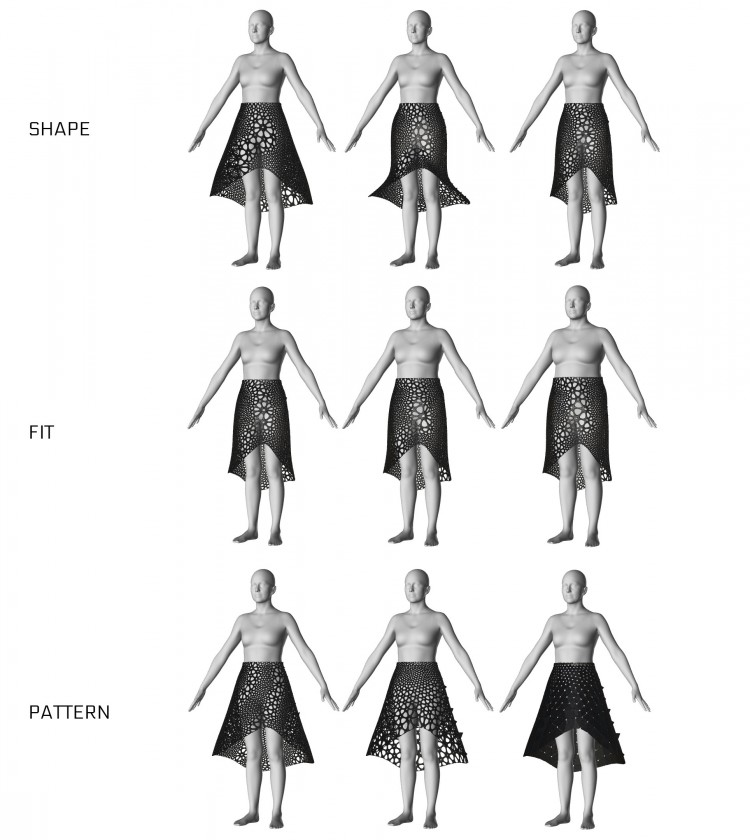
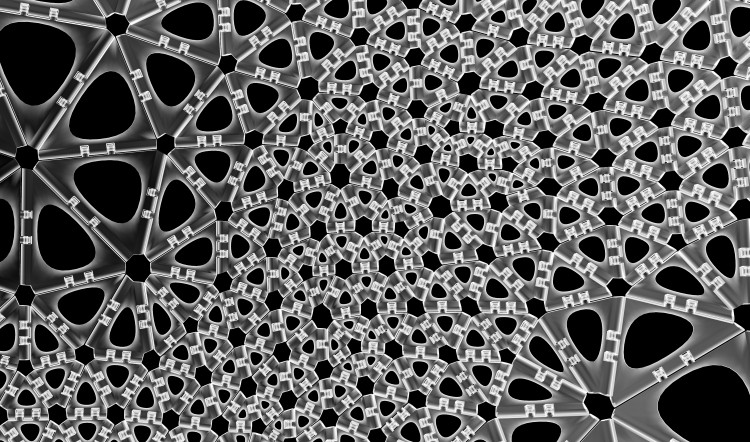
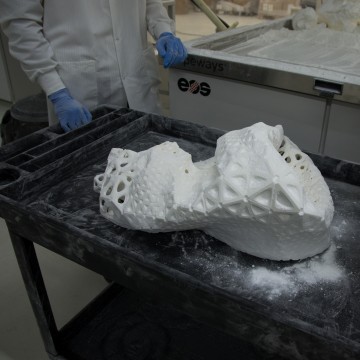

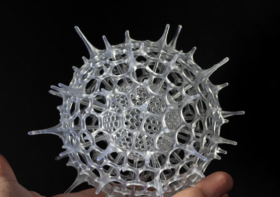
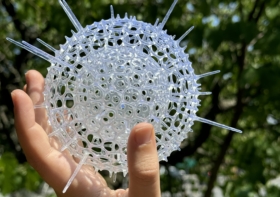
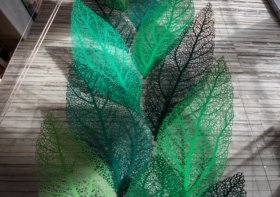
Lara ladin
I want a dress! Did I miss something? Where are you selling? Congratulations! met you guys a couple of years ago at a furniture show! You’ve come a long way! Awesome! Lara
Marie Staver
Thanks, Lara! Right now we’re not actively selling Kinematics dresses and other garments. We’ve only printed one dress so far, so we’d like to do more testing. Also we have to compress the garments (which happens offline) before we have an idea of what the cost will be. We will be pricing and printing them by special request only.
For now, people can design their own pieces in the Kinematics Clothing app and save them. We’re really excited to see what sorts of clothes people design and take that feedback into account as we continue working on the project! Early next year we are planning to switch on ordering for more modestly sized and priced items like mini-skirts and belts.
Holly McQuillan
I love it! What you’re doing will make my research virtually obsolete which actually really excites me!!! Keep it up. I’d love to see form pushed further in your future work.
Tom Ellis
Congratulations. This feels really momentus. I think the future holds many new things with this technology. You were the first!
Tom Ellis, artist
leon yeats
Nicely done.
I work in packaging, folding film around shapes.
I have also worked in a high fashion.
I love your folding software.
However it would be nice to see a larger printer , this might well allow for colour change and different joint topology to produce flow patters as the wearer moves that enhanse the form, a 4 d experience.
Axel Eriksson
This is amazing! I have so many questions.
Are you going to any events to demonstrate the dress? What events?
Are you planning on selling it? Retail price?
How do you see this developing? What kind of 3D printed wearables will we see in stores first that are truly useful? Custom fit hats? Shoes? Dresses? Gloves?
Is it possible to use the photo to post on our blog and social media to show our followers what can be done with 3D printers?
Marie Staver
Hi, Axel! Glad you like it. :) We are at CES this week to exhibit the second Kinematics dress — see our most recent post — and will put all of our upcoming events on our Events page, too. Right now we’re not actively selling Kinematics dresses and other garments. We’ve only printed one dress so far, so we’d like to do more testing. Also we have to compress the garments (which happens offline) before we have an idea of what the cost will be. We will be pricing and printing them by special request only.
For now, people can design their own pieces and save them. We’re really excited to see what sorts of clothes people design and take that feedback into account as we continue working on the project. Early next year we are planning to switch on ordering for more modestly sized and priced items like mini-skirts and belts.
You can use our photos to promote the dress; please just credit them and link back to our site.
Thanks!
Thomas
Incredible work, BRAVO!
Mary Carr
I got a chance to see the dress at CES last week and was totally blown away. It is quite an amazing piece of work. I do have a question about the dress, how much did the finished piece weigh? When I first saw the dress from a bit of distance I was sure it was made of lace. I had to touch it as a reality check!
Marie Staver
Thanks for comment, Mary, and for visiting us at CES! The finished dress weighs about 5lbs.
Best,
Marie @ Nervous System
William Thayer
I am thrilled to see this. I teach a 9th grade technology class and I’m sure this developments will pique the interest of my students! We are working to gather the money to obtain a 3D printer so that students can explore the amazing potential of this technology.
Thanks!
— Bill —
Rase
Have you considered doing any men’s fashion, such as a suit? I’m not sure it would work from an aesthetic point of view, but would be very interested to see.
Marie Staver
Hello, Rase! Actually, yes — we’re starting with a Kinematics necktie, and we plan to design more items for men and women. Look for announcements about those soon!
Best,
Marie @ Nervous System
Martyna
Hello,
I found this very inspiring and beautiful. I was wondering whether and when kinetic clothing and jewellery are to be for sale in the future. I have been very interested in futuristic fashion for years and although I have probably not seen that much of it, I have never seen anything like this.
Jessica
Hello Martyna,
Yes our Kinematics jewelry is available for sale in our shop: Kinematics Jewelry
You can also select custom necklace, bracelet or earrings to design your own.